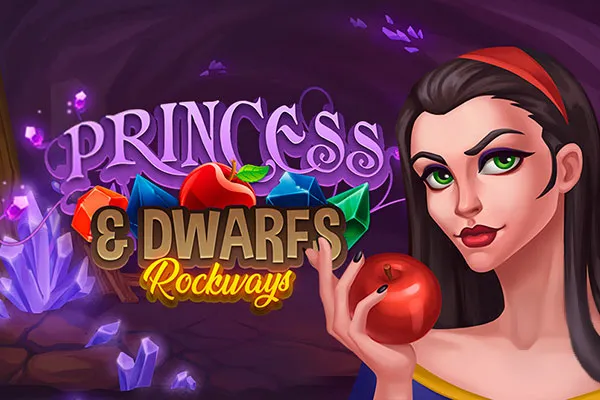Indwin7: A Comprehensive Guide to Understanding and Utilizing the Platform in India
Indwin7, while not directly comparable to established platforms like Windows 7 (which is now outdated and unsupported), represents a diverse landscape of online services, tools, and initiatives relevant to the Indian context. This guide aims to provide a comprehensive overview of what "Indwin7" might encompass, exploring potential interpretations and offering valuable insights for Indian users. We'll delve into the various possibilities, covering online platforms, government initiatives, digital tools, and even the lingering impact of Windows 7 in India.
Understanding the Potential Meanings of "Indwin7" in India
The term "Indwin7" is not a universally recognized platform or service. Therefore, understanding its potential meanings requires considering the context in which it's used. Here are some possible interpretations:
A Hypothetical Indian Version of Windows 7: This is perhaps the most literal interpretation. However, no such official version exists. Windows 7, while popular globally, was never specifically localized or rebranded as "Indwin7." However, its influence on Indian computing habits is undeniable.
A Collection of Indian Online Platforms & Services: "Indwin7" could be used informally to refer to a collection of seven (or a similar small number) of popular or useful online platforms and services specifically relevant to Indian users. This could include e-governance portals, online payment systems, educational resources, or entertainment platforms.
A Government Initiative or Digital India Project: It's conceivable that "Indwin7" was a codename or internal designation for a specific government initiative related to digital literacy, online services, or technology adoption in India.
A Software or Application Suite: The term might refer to a specific suite of software applications designed for use in India, perhaps focusing on productivity, education, or entertainment.
A Nostalgic Reference to Windows 7 Usage in India: Given the widespread adoption of Windows 7 in the past, "Indwin7" could be a nostalgic reference to that era of computing in India, reflecting on the software and online experiences prevalent at the time.
Exploring Potential Components of "Indwin7" (A Hypothetical Indian Online Ecosystem)
Assuming "Indwin7" represents a collection of useful online resources for Indian users, let's explore some platforms and services that could be considered part of this hypothetical ecosystem:
1. Aadhaar Enabled Services
Aadhaar, the 12-digit unique identity number issued to all Indian residents, is the cornerstone of many online services. Aadhaar-enabled services allow for secure authentication and access to various government and private sector platforms. This includes:
- eKYC (Electronic Know Your Customer): Streamlines identity verification for banking, telecom, and other services.
- Direct Benefit Transfer (DBT): Enables direct transfer of government subsidies and benefits to Aadhaar-linked bank accounts.
- Aadhaar Payment Bridge System (APBS): Facilitates seamless payments using Aadhaar authentication.
2. UPI (Unified Payments Interface)
UPI has revolutionized digital payments in India. It allows users to transfer money instantly between bank accounts using a mobile app. UPI is a critical component of the Indian digital economy, facilitating everything from small retail transactions to large business payments. Key benefits include:
- Instant Transfers: Real-time money transfers, 24/7.
- Mobile-First Approach: Convenient and accessible via smartphones.
- Interoperability: Works across different banks and payment apps.
3. DigiLocker
DigiLocker is a secure cloud-based platform for storing and accessing important documents, such as driving licenses, PAN cards, and academic certificates. It eliminates the need for physical documents and promotes paperless governance. Key features include:
- Secure Storage: Documents are stored securely in the cloud.
- Accessibility: Documents can be accessed anytime, anywhere.
- Verification: Documents issued through DigiLocker are considered valid and authentic.
4. UMANG (Unified Mobile Application for New-age Governance)
UMANG is a single platform that provides access to a wide range of government services, including:
- Paying utility bills
- Applying for government schemes
- Accessing educational resources
- Registering grievances
UMANG aims to simplify access to government services and promote citizen engagement.
5. Bharat Bill Payment System (BBPS)
BBPS is an integrated bill payment system that allows users to pay all their bills (electricity, water, gas, telecom, etc.) through a single platform. It offers multiple payment channels, including online portals, mobile apps, and physical outlets.
6. e-NAM (Electronic National Agriculture Market)
e-NAM is an online trading platform for agricultural commodities, connecting farmers with buyers across the country. It aims to improve price discovery, reduce transaction costs, and promote fair trade practices.
7. SWAYAM (Study Webs of Active-Learning for Young Aspiring Minds)
SWAYAM is a government initiative that provides access to a wide range of online courses, covering various subjects and skill sets. It aims to promote education and skill development among Indian youth.
The Lingering Impact of Windows 7 in India
Even though Microsoft officially ended support for Windows 7 in January 2020, its legacy continues to resonate in India. Many individuals and businesses, particularly in smaller towns and rural areas, continued to use Windows 7 due to its familiarity, lower hardware requirements, and the cost of upgrading to newer operating systems. This poses security risks due to the lack of security updates, making systems vulnerable to malware and cyber threats.
Why did Windows 7 remain popular in India?
- Hardware Compatibility: Windows 7 could run smoothly on older and less powerful computers, which were common in many Indian households and businesses.
- Familiarity and Ease of Use: Users were accustomed to the Windows 7 interface and found it easier to use compared to newer operating systems.
- Cost Considerations: Upgrading to a newer operating system required purchasing a license and potentially upgrading hardware, which could be a significant expense for some users.
- Software Compatibility: Some older software applications were not compatible with newer operating systems, forcing users to stick with Windows 7.
Security Risks of Using Unsupported Windows 7:
- Vulnerability to Malware: Without security updates, Windows 7 systems are highly vulnerable to malware attacks.
- Data Breaches: Security vulnerabilities can lead to data breaches and loss of sensitive information.
- System Instability: Malware infections can cause system instability and performance issues.
Recommendations for Users Still Using Windows 7:
- Upgrade to a Supported Operating System: The best solution is to upgrade to a supported operating system like Windows 10 or Windows 11.
- Consider Linux Distributions: Linux distributions offer a free and secure alternative to Windows.
- Use a Reputable Antivirus Software: Install and regularly update a reputable antivirus software.
- Be Cautious of Suspicious Emails and Websites: Avoid clicking on suspicious links or opening attachments from unknown senders.
- Back Up Your Data Regularly: Regularly back up your important data to an external drive or cloud storage.
Conclusion
While "Indwin7" doesn't represent a single, defined entity, it serves as a useful concept for exploring the diverse landscape of online platforms, government initiatives, and digital tools relevant to Indian users. From Aadhaar-enabled services and UPI to DigiLocker and UMANG, India has made significant strides in digital transformation. However, the legacy of Windows 7 reminds us of the importance of security and the need to stay updated with the latest technology. By understanding the various components of this hypothetical "Indwin7" ecosystem and addressing the challenges of outdated technology, Indian users can harness the power of digital tools to improve their lives and contribute to the nation's progress. As India continues its journey towards a digital future, it's crucial to prioritize digital literacy, cybersecurity, and accessibility to ensure that everyone can benefit from the opportunities that technology offers.
Related Pages
- भारत बनाम दक्षिण अफ्रीका क्रिकेट टाइमलाइन: रोचक तथ्य, ऐतिहासिक मुकाबले और जीत की कहानियां!
- Police Bharti 2025: Latest Vacancies, Eligibility, and Application Tips for Indian Aspirants!
- How to Pay ESIC Challan Online Easily: Step-by-Step Guide for Indian Employers
- NSE: HFCL Stock Surge – Unlock High Returns for Savvy Indian Investors!
- Official NREGA Job Card List 2023: Check Your Status Instantly in India!









